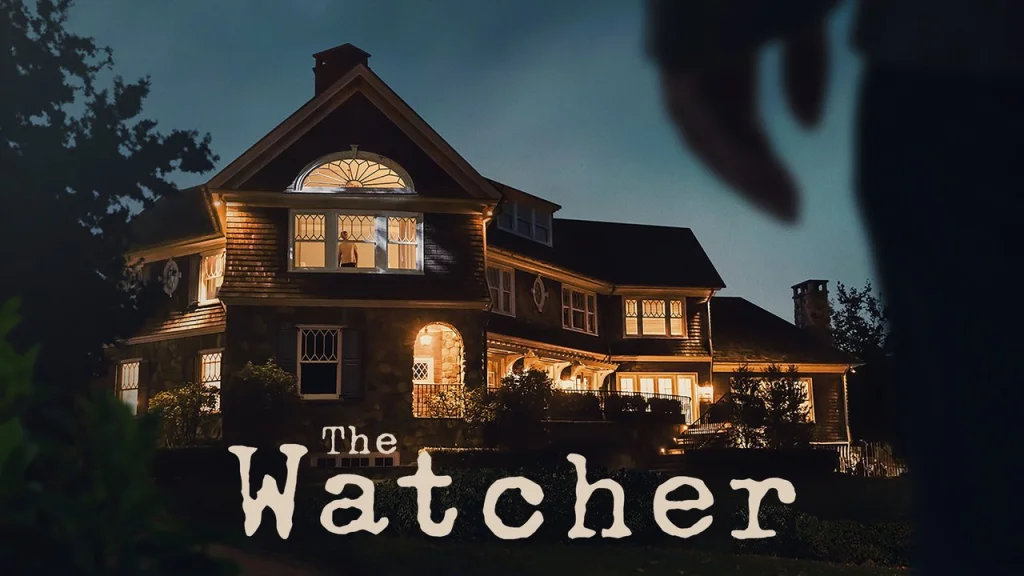“The Watcher True Story” has captivated public imagination, blending chilling reality with layers of unnerving mystery. In the quiet suburban setting of Westfield, New Jersey, an ordinary family found themselves at the center of an extraordinary ordeal—receiving letters from someone calling themselves “The Watcher,” claiming intimate knowledge of their new home, its rooms, and the people who lived in it. The unnerving correspondence triggered widespread fascination, with the story swiftly moving beyond local news to national headlines, true-crime podcasts, and social media speculation. Yet as intriguing as the narrative is, separating the confirmed facts from sensationalized fiction has become increasingly challenging.
This article delves deep into the truth behind “The Watcher True Story,” examining verified details, uncovering inconsistencies, and shining light on how the tale has evolved through media retelling. We’ll explore backgrounds ranging from the house’s purchase to the letters themselves, identify theories and suspects, and assess how much of the story is grounded in verifiable evidence—and how much thrives on speculation. Whether you’re a true-crime aficionado or simply drawn by the uncanny, this breakdown aims to clarify fact versus fiction, offering a comprehensive, thoughtful analysis.
The Watcher True Story: The Purchase of the House
When the Broaddus family bought 657 Boulevard in Westfield in 2014, little did they know the home’s price—about $1.3 million—would be overshadowed by what followed. The house, known locally as “The Watcher house,” was reportedly perfect on the surface: spacious, stately, and in a coveted neighborhood. But soon after closing, the family began to receive letters from someone identifying only as “The Watcher.”
By going through property records and interviewing neighbors, investigators confirmed that the Broadduses were indeed the legal owners and had no prior knowledge of any threats or history of similar harassment involving the property. The legal documents show the sale was normal. However, public interest skyrocketed once the first letter arrived, dated just weeks after the purchase. It contained details of the house layout, room colors, and predicted the arrival of children—details not publicly available.
The juxtaposition between a routine real estate transaction and the emerging envelope of menace fueled the media frenzy. That part of the story is firmly grounded in documentation: property deeds, timelines of letter delivery, and statements from the family and law enforcement. Still, over time, retellings have added color—like whispers of previous owners cursed by the house or secret surveillance—but these have no basis in official records.
The Watcher True Story: The Letters Themselves
The letters from “The Watcher” are the heart of the mystery. They were mailed from an unknown location to the Broaddus family shortly after they moved in. Written in block-print handwriting on plain, unmarked cardstock, they began with chilling pleasantries and quickly veered into invasive commentary: acknowledging the family’s arrival, describing favorite rooms and obscured architecture, and ominously suggesting future births.
Police and handwriting analysts have confirmed the consistency across multiple letters. The tone—polite but unnerving—fueled public fascination. Some say the vocabulary and phrasing hint at someone educated, possibly local, but no conclusive suspect has ever emerged. The Broadduses warned off curious neighbors and reported the letters, yet no definitive author was identified—laundered stamps and a P.O. box, perhaps, stymied forensic leads.
Literally every known letter in the case is documented and included in case files. Transcripts circulate in media reports, but some storytellers have exaggerated phrases or invented dialogue for dramatic purposes. To differentiate fact from fiction, one must reference the actual written correspondence as reproduced in court or news archives—not dramatized versions. Those wanting the authentic voice of “The Watcher” should consult first-hand transcripts or sealed filings rather than sensational book excerpts or fictional adaptations.
The Watcher True Story: Investigations and Suspects
Law enforcement treated the case with caution. Detectives canvassed the neighborhood, interviewed prior owners, and sought forensic clues. Leads ranged from a possible exasperated or disturbed neighbor to someone with real estate knowledge who wanted to sell the house at a profit. One notable figure: the original “Watcher House” developer’s family had lived nearby—and some reports speculated they resented new owners.
Despite multiple threads, including local rumor tying a disgruntled parent or frustrated hobby voyeur, no investigator ever publicly identified—or charged—any suspect. The family themselves have grown frustrated by speculation and rumors, dismissing imposters and “sleuths” who claim they “know more than the authorities.” The state attorney general’s office even reevaluated older possible suspects, but no arrests occurred.
Over time, fictionalized books and dramatizations have leaned into suspect theories—claiming more insider knowledge or covert motives. These dramatizations often exceed what police confirmed. The public version should rely on law-enforcement summaries, sworn statements, and credible reporting rather than true-crime adaptation embellishments.
The Watcher True Story: Media Influence and Public Reaction
Once the story caught fire, media and public coverage magnified it. True-crime bloggers, podcasts, TV producers, and filmmakers seized on unanswered questions. Some framed the Broadduses as victims of a supernatural-like stalker; others posited conspiracy theories—anything from paranormal watchers to cultish surveillance.
Media outlets sometimes misquoted the letters or implied sinister intent that wasn’t clearly there—assigning horror-film tropes, suggesting the Watcher wanted to “raise a family” in the house or kill the Broaddus children. Social media only amplified the narrative, often prioritizing shareable fear over factual precision.
However, reputable outlets still offered measured coverage, emphasizing uncertainties and legal limitations. Courts even froze sale of the property and the family eventually moved away—not from confirmed threat, but fear and media harassment. Comparisons between media-driven mythmaking and documented reality underscore how easily true stories morph in the public imagination.
The Watcher True Story: What We Know and What Remains Unknown
In essence:
Facts we know
- The Broaddus family bought the house in 2014. Confirmed.
- They received multiple handwritten letters calling themselves “The Watcher,” containing private detail. Verified.
- Law enforcement investigated but never identified a suspect. Documented.
- The family was publicly distressed and ultimately didn’t live there. Confirmed.
Speculation and fiction
- Claims that the house was cursed, haunted, or subject to occult conditions. No credible evidence.
- Assertions of supernatural forces or elaborate conspiracies. Pure fiction.
- Accusations directed at specific individuals or families without proof. Unsubstantiated and often debunked.
The enduring mystery is exactly that—unsolved. The blend of tangible details and unanswered questions makes the story compelling but also ripe for embellishment. It remains a cautionary case of how real-life dread can be amplified into myth, and why it’s important to root discussion in documented fact.
FAQs
- Who are the Broaddus family?
A suburban New Jersey family who purchased 657 Boulevard in Westfield in 2014. They became unwitting subjects of national headlines after the arrival of anonymous letters from “The Watcher.” They cooperated with police, spoke publicly (sparingly), and eventually sold the house amidst harassment. Their identities largely remain private beyond these public facts. - What exactly were in the letters?
The letters, printed neatly on unmarked cards, acknowledged the family’s arrival and detailed private features—room colors, layouts, and imminent births. They were polite yet unnerving, and consistent in handwriting style. No threats of violence were expressed, though the tone implied omniscience. Authentic transcripts exist in case files and some media archives. - Did the Broaddus family ever see the sender?
No. There was no known face-to-face contact. The letters arrived via mail with postmarks from unknown locations; there were no witnesses or surveillance footage of a suspected author approaching the home or dropping mail. - Were any suspects ever identified?
Police explored multiple leads—including real-estate professionals and neighbors—but never publicly identified a suspect. No arrests were made. The investigation remains open under New Jersey law enforcement jurisdiction. - Is the Watcher story based on a real event?
Yes. It is rooted in a real occurrence: letters sent to a real family in a real house. The narrative gained traction through media coverage and adaptations, but its origin is factual. However, fictional versions may dramatize or embellish. - Is the house haunted?
There’s absolutely no credible evidence suggesting paranormal activity or haunting. The unnerving element is human-made—the anonymous letters—not anything supernatural. - Why did the case go viral?
The unsettling balance of suburban normalcy and psychological creepiness—paired with unsolved mystery—made media coverage irresistible. Podcasts and true-crime shows further amplified interest. - Did the Broadduses stay in the home?
They briefly lived there but ultimately decided against staying. The combination of private fear, media intrusion, and uncertainty prompted their choice to sell. - Are transcripts of the letters available?
Yes, they’ve been published in parts via credible news outlets and court filings. Anyone seeking the precise language should consult published transcripts or request court documents. - Has the case been featured in books or TV?
Yes—some true-crime books and TV adaptations explore the case. However, dramatization means they often include speculative or fictionalized content beyond what’s proven. - Did authorities ever rule out pranksters?
While prank-based motives were considered, no forensic or letter–analysis conclusively supported a prank scenario. Everything pointed instead to targeted surveillance or personal obsession. - Could the Watcher be someone who lived in the area?
Possibly—but despite neighborhood interviews and background checks, no viable suspect emerged. The author’s local knowledge could be inferred from letters, but remained unverified. - How many letters were sent?
Multiple letters—at least two confirmed—were mailed to the family. Awareness of the exact count varies by source, but all were similarly formatted and signed “The Watcher.” - Did the letters contain threats?
No overt threats. Instead, the letters expressed disturbing familiarity with the house and anticipated family life. The tone was unsettling without being explicitly hostile. - Did neighbors feel unsafe?
Many neighbors reportedly felt alarm and curiosity. Some became overly interested or invasive after media attention, prompting the family to request privacy and no one was harmed. - Was there any motive established?
No motive was ever confirmed. Theories included jealousy, real-estate profiteering, or perverse fascination—but none proved factual. - Has the case ever been reopened?
Investigators revisited leads periodically, but no new public developments have emerged. It remains an unresolved case in Westfield, NJ. - Did the Broadduses sue anyone?
There’s no record of them suing suspected individuals. The legal record focuses on police investigation and property sale, not litigation over the letters. - Has any similar case occurred elsewhere?
While anonymous threatening letters onto new homeowners do crop up occasionally, none have reportedly matched the specificity and longevity of The Watcher case. - Where can someone learn verified information?
Reliable sources include archived local news reports, court filings in Union County, NJ, and statements from the Broaddus family or law enforcement. True-crime adaptations may offer more flair—but for accuracy, return to these primary materials.

